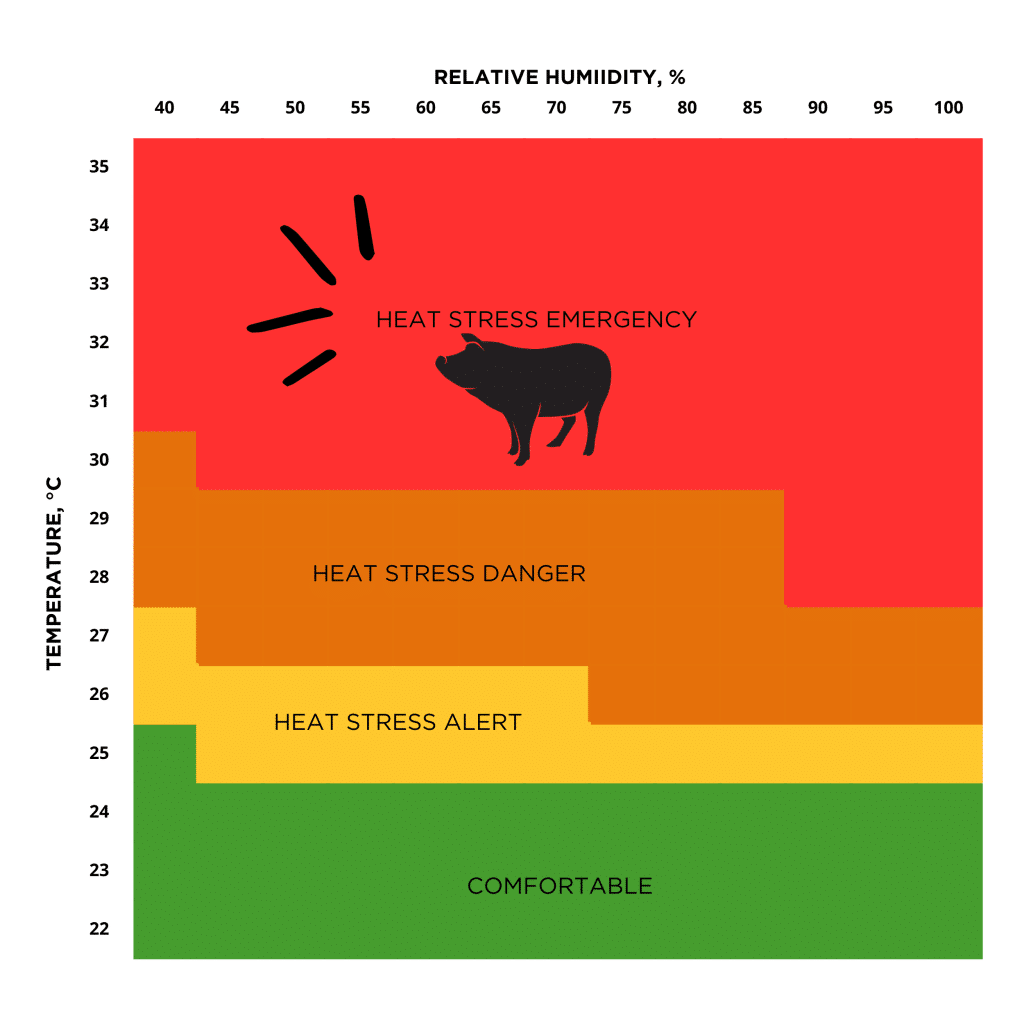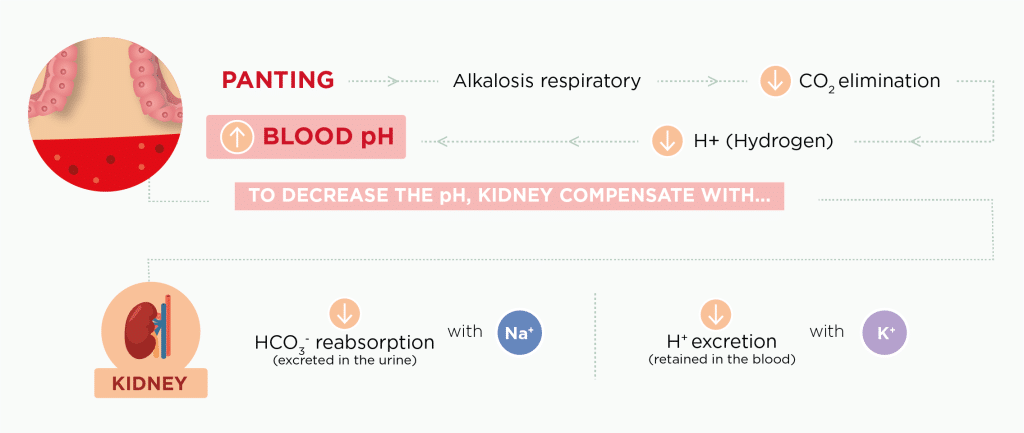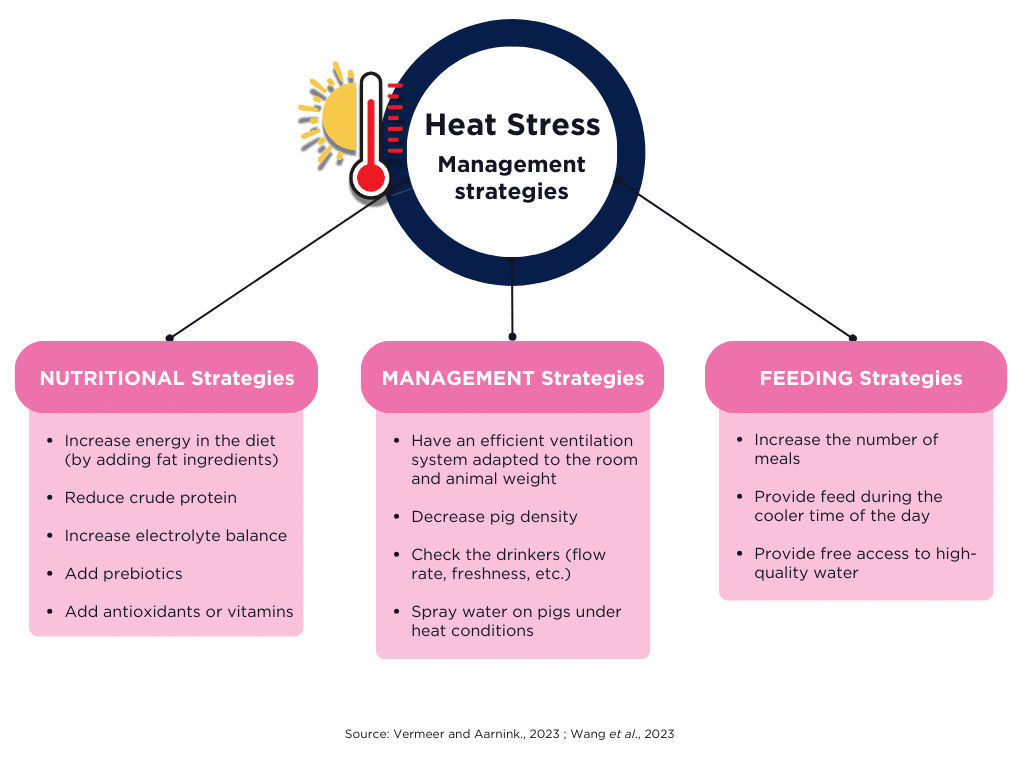As the average global temperature is projected to rise by 1.5°C by 2050 compared to pre-industrial levels, and the impacts of climate change become ever more apparent, the management of thermal stress in pig farming is becoming ever more crucial. In the largest pig production areas, the number of days exceeding 25°C (without housing benefits) could be more than 200 days per year, depending on the region.
To understand the importance of this issue, it’s essential to know the mechanism of heat stress on the physiological side, its impact on technical and economic results and how to manage heat stress.
Defining Heat Stress: Technical and Economic Impacts
Heat stress in pigs occurs when they are exposed to high temperatures and humidity levels beyond their physiological tolerance. For pigs, a normal temperature range is between 18°C and 25 °C. This condition prevents pigs from dissipating heat effectively, leading to behavioral changes and reduced productivity. The Temperature Humidity Index (THI) is used to assess heat stress levels, combining temperature and humidity effects. Higher THI values indicate greater heat stress risk. The principle is straightforward: a dry atmosphere and a wet animal facilitate heat loss. Conversely, an atmosphere saturated with moisture, unable to absorb more water and thus preventing evaporation, is the worst scenario for an animal in heat stress conditions.
The impact of thermal stress on the technical and economic performance of livestock farms can be significant, potentially reducing feed intake by 250 g per day per pig and daily growth by 58 g/day (Da Fonsesca de Oliveira et al., 2018). Sows are also affected by heat stress with negative impacts at all key stages: farrowing, lactation and reproduction (Nardone et al., 2006 ; Lucy et al., 2012). A study conducted in the USA demonstrated that thermal stress could cost the industry up to $299 million (St-Pierre et al., 2003).
- Discomfort : Lying pattern – separated and in lateral position
- Increased water consumption
- Decreased feed intake
- Decreased pig activity
- Increased respiration rate and panting

Figure 1. Temperature and Humidity Stress Index for Growing-Finishing Swine (Adapted from H.Xin and J.Harmon, 1998)
The Complex Mechanism of Pig Thermoregulation
Pigs cannot sweat to control their body temperature, but they can manage it through respiration. Pigs lower their temperature by evaporation. However, during excessive heat exceeding 25°C, which is outside their thermal comfort zone, other mechanisms and consequences come into play. It is also important to note that the thermal comfort zone varies according to the physiological stage of the animal as well as the farming conditions (density, ventilation, environment…). First, the pig will decrease its feed consumption to reduce metabolic activity, and water consumption will increase. In situations of thermal stress, pigs will redistribute cardiac output to the skin to regulate temperature. This leads to reduced vascularization of the digestive system and weakening of the intestinal mucosa, facilitating the entry of pathogens into the body. Additionally, heat stress in pigs disrupts electrolyte balance by increasing respiration and evaporation, leading to higher CO2 excretion. This alters the bicarbonate buffer system, raising blood pH and causing respiratory alkalosis. To restore balance, pigs excrete more bicarbonate and retain H+ ions, requiring supplementation with electrolytes like sodium and potassium, indeed the equation for electrolytique balance is: EB (meq/kg)= (Na/22.99+K/39.10-Cl/35.45)*1000. Therefore this stress increases the production of Reactive Oxygen Species and increases Oxidative stress. A significant disorder of the acid-base balance or the fragility of the pig’s system affects its performance and can even lead to the animal’s death. (Ganzalez-Rivas et al., 2019 ; Gourdine et al., 2021).

Figure 2. Mechanisms of Electrolyte Imbalance (Adapted to: Wasti (2020); Soriano (2021); Okanlawon OM et al. (2023); Diaz G (2019))
Optimizing Heat Stress Management: Key Strategies
Strategies to manage heat stress are diverse; we can categorize them into three types: nutritional strategies, management strategies, and feeding strategies. Discover them in the following illustration.
Discover’s Phosphea solution to manage heat stress in pig production
Firstly, to manage the effects of digestive system weakening and oxidative stress, Phosphea offers its product CalSeaGrow, with a 2-in-1 action: Prebiotic & Antioxidant. Additionally, as previously mentioned, electrolyte balance is disrupted by thermal stress, highlighting the importance of this parameter. Phosphea offers Neophos and MSP, two phosphates that provide essential minerals and sodium without chlorine, ideal for improving electrolyte balance.

Figure 3 – Key strategies to manage heat stress in pig production


